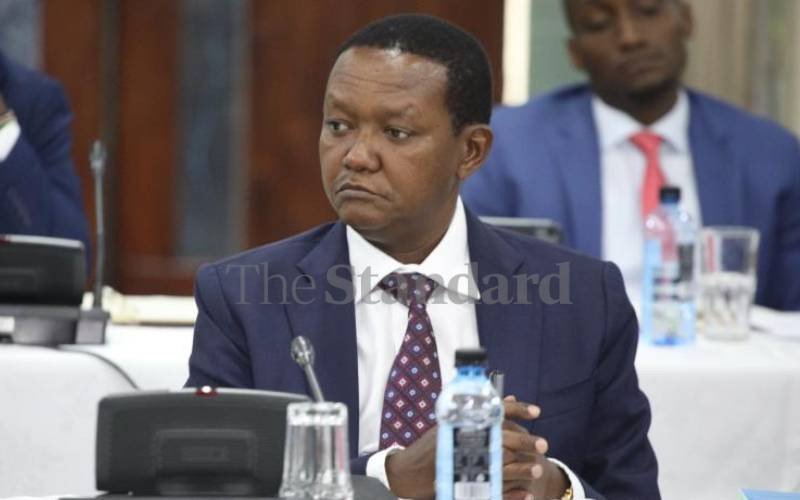 |
| PHOTO: Courtesy |
When senator Barack Obama visited Kenya, his choice of the Maasai Mara as a family vacation spot was a no-brainer.
Remember, as reported by Chicago Sun Times, the trip was not paid for from the senator’s official purse. He and his staffers personally paid for the ‘side trip’.
This year, the most powerful man in the world is due back in the land of his father. It is exciting to be on the trail of Obama’s 2006 Kenyan safari. A late afternoon departure from the capital is no dampener as the Ngong Hills dotted with innocuous wind turbines and the majesty of the rift valley makes up for it.
The adventure picks up as soon as we land at Naboisho Airstrip after the scenic 45-minute flight.
On cue, Steve Nkumum, our driver guide, pulls up with drinks and bitings that complement the game drive we embark on immediately. A herd of seven gentle jumbos and a calf are the highlight of our drive.
At dusk, we arrive at Basecamp Maasai Mara, situated along the Talek River on the boundary of the Mara Reserve.
Its thick green cover stands out, thanks to a tree plantation established in 2000 as a carbon-capture project.
Guests visiting Basecamp are encouraged to plant a tree to help combat climate change and to help revive the Talek River ecosystem.
Right at the entrance, The Obama Forest with a tree planted by each member of the US First Family flags the 100,000 (and counting) strong indigenous tree plantation.
Further on into the oasis, past the unpretentious reception, are 12 liberally spaced tents and a clubhouse. It is under these overly-private thatch roofs strategically erected along a lush peninsula looking out over the gold savannah that the Obamas ducked the paparazzi.
Going to great lengths to protect the environment, the luxurious accommodation imitates local Maasai architecture.
The supporting walls mimic manyatta walls smothered in cow dung, with web-like branches running across them.
Heightening the allure is soft lighting from solar lanterns characteristic of the entire establishment.
Private footbridge
The open hot showers are a treat, especially under a starry night.
Stay informed. Subscribe to our newsletter
In the morning, we wake up to a hot air balloon gliding by.
The camp has a private footbridge from where we were privileged to click away at a pride barely a kilometre away.
Lions dining on a fresh kill was what the gods bestowed on the Obamas.
We, too, had our very own special encounter with nature: We startled and got charged at by a buffalo cow. She was protecting her newborn calf.
As we watched, nature’s cruel side was played out. Hyenas, in their opportunistic element, began creeping in from all directions. As fate would have it, however, what seemed like easy pickings turned out to be a challenge as the young brave heart and its mother fended off the menacing attack for hours.
Even as we remained keen on witnessing the eventual outcome of the struggle, we had grumbling stomachs to please.
No sooner had we turned ready to brave the approximately hour long drive than enjoolata (a Maasai term used to describe the joy felt when something hidden is revealed) happened.
Steve pulled his best trick yet; an English breakfast served in the plains, the wildlife just but specks.
Souvenir workshop
While the Obamas only had a night to spare, we had two.
Basecamp Explorer’s ritzy camp christened Eagle View and the more intimate Wilderness Camp situated in the adjacent Naboisho Conservancy were on the itinerary.
Before we set off though, a visit to our camp’s acclaimed souvenir workshop was a must.
Basecamp Maasai Brand (BMB), a community-based handicraft business, employs 118 Maasai women.
Profits are shared 75 per cent to 25 per cent in favour of the women, who dictate the price of souvenirs made from recycled items.
This among other efforts define Basecamp’s five core values – care, culture, conservation, climate and capacity.
Two more stood out for me: Five women trained as solar engineers in India have lit 200 homes using solar technology and Koiyaki Guiding School (KGS) has enhanced the employment prospects of young Maasai in a time when traditional ways of living are being eroded by land scarcity, climate change and modern development.
Three of the six driver guides at Basecamp Kenya are former KGS students, including Steve, our able guide, and Agnes Kilena, 23, one of the first Maasai women to become a driver guide in the Mara. With such initiatives, it is no wonder then that, in addition to its numerous honours, Basecamp Maasai Mara was not only honoured to host a future president, but it just got welcomed to the Certificate of Excellence Hall of Fame.
[email protected]
 The Standard Group Plc is a
multi-media organization with investments in media platforms spanning newspaper
print operations, television, radio broadcasting, digital and online services. The
Standard Group is recognized as a leading multi-media house in Kenya with a key
influence in matters of national and international interest.
The Standard Group Plc is a
multi-media organization with investments in media platforms spanning newspaper
print operations, television, radio broadcasting, digital and online services. The
Standard Group is recognized as a leading multi-media house in Kenya with a key
influence in matters of national and international interest.
 The Standard Group Plc is a
multi-media organization with investments in media platforms spanning newspaper
print operations, television, radio broadcasting, digital and online services. The
Standard Group is recognized as a leading multi-media house in Kenya with a key
influence in matters of national and international interest.
The Standard Group Plc is a
multi-media organization with investments in media platforms spanning newspaper
print operations, television, radio broadcasting, digital and online services. The
Standard Group is recognized as a leading multi-media house in Kenya with a key
influence in matters of national and international interest.










